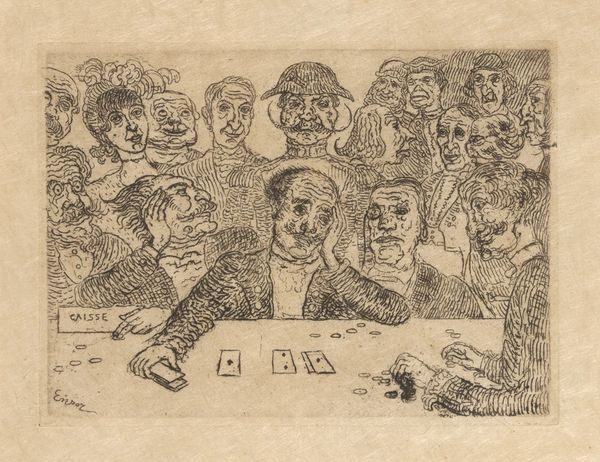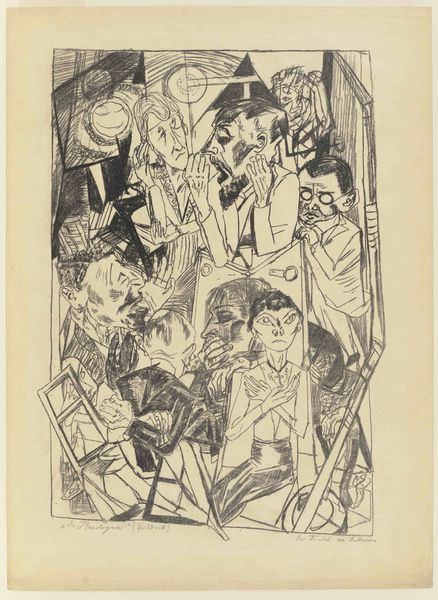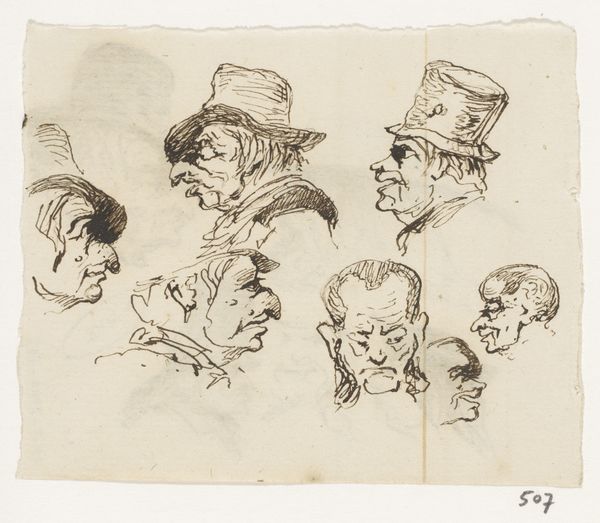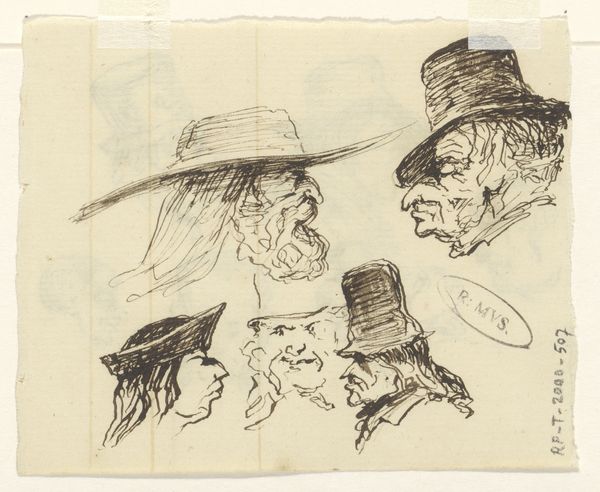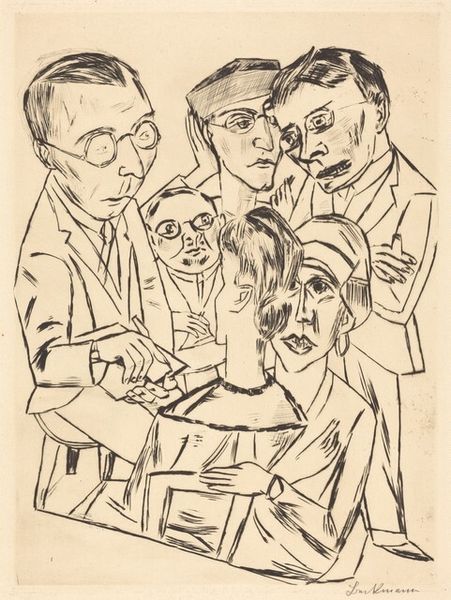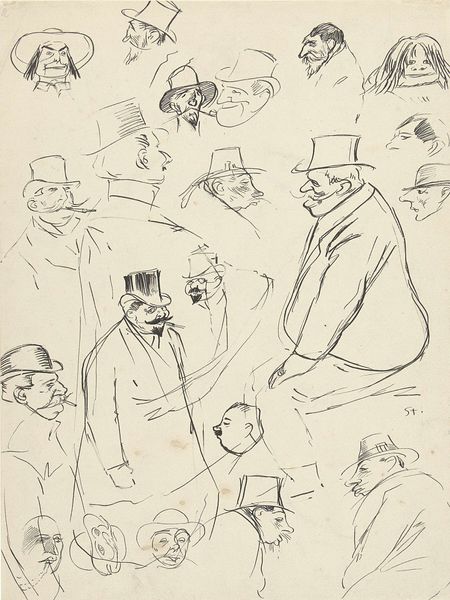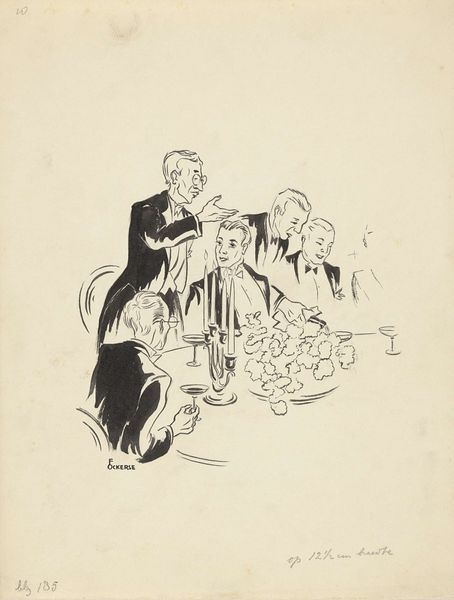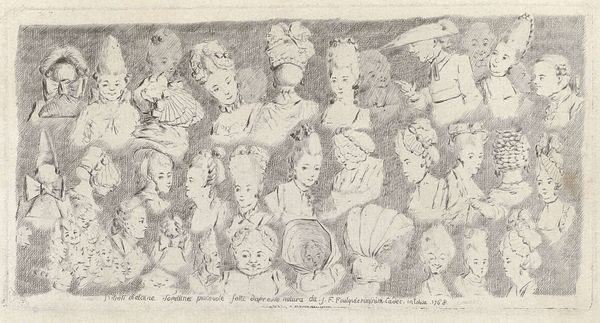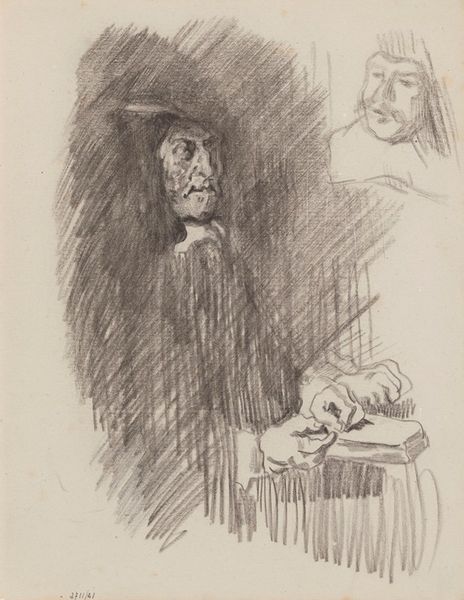
drawing, ink, pen
#
portrait
#
drawing
#
comic strip sketch
#
imaginative character sketch
#
caricature
#
cartoon sketch
#
personal sketchbook
#
ink
#
sketchwork
#
ink drawing experimentation
#
sketch
#
pen-ink sketch
#
expressionism
#
sketchbook drawing
#
pen
#
storyboard and sketchbook work
#
sketchbook art
Copyright: Public domain
Theodor Kittelsen made this lithograph in Norway, likely at the turn of the 20th century. Called "Fasjaa Vaare Medmennesker," it translates roughly to "Damn Our Fellow Men." Kittelsen renders a crowd of caricatured faces, each marked by exaggerated features and expressions. This composition reflects the cultural and political tensions of Norway at the time. Norway was experiencing a period of national romanticism, seeking to establish a distinct cultural identity, while also struggling with social inequalities and class divisions. Kittelsen critiques the institutions and social structures of his time. His imagery is biting and progressive, challenging the conservative norms of Norwegian society. To fully grasp the nuances of this work, delving into the publications and political debates of the era is essential. Understanding the context of Norwegian nationalism and social reform movements helps us interpret the meaning of Kittelsen's artistic commentary.
Comments
No comments
Be the first to comment and join the conversation on the ultimate creative platform.
